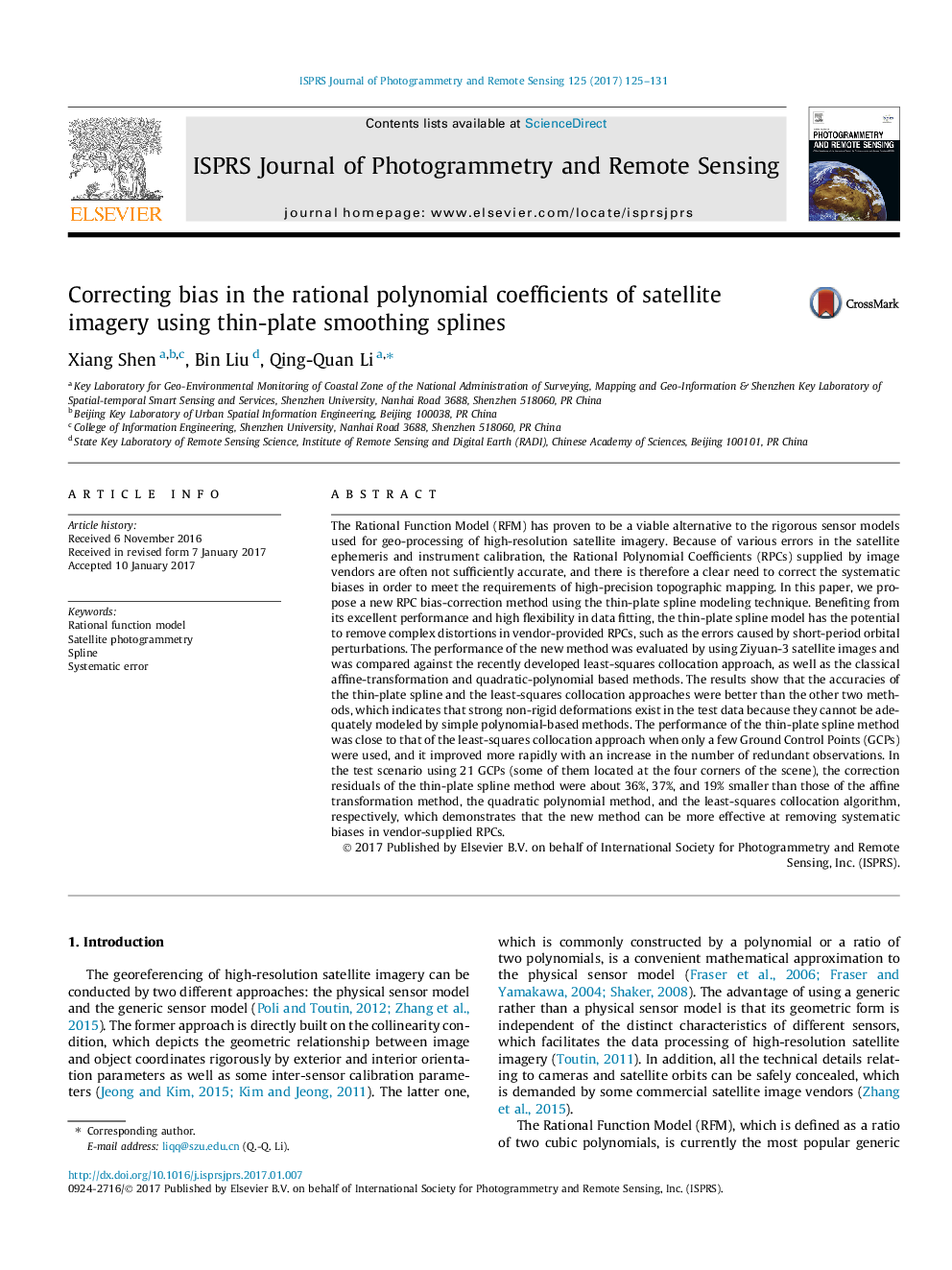| Article ID | Journal | Published Year | Pages | File Type |
|---|---|---|---|---|
| 4972904 | ISPRS Journal of Photogrammetry and Remote Sensing | 2017 | 7 Pages |
Abstract
The Rational Function Model (RFM) has proven to be a viable alternative to the rigorous sensor models used for geo-processing of high-resolution satellite imagery. Because of various errors in the satellite ephemeris and instrument calibration, the Rational Polynomial Coefficients (RPCs) supplied by image vendors are often not sufficiently accurate, and there is therefore a clear need to correct the systematic biases in order to meet the requirements of high-precision topographic mapping. In this paper, we propose a new RPC bias-correction method using the thin-plate spline modeling technique. Benefiting from its excellent performance and high flexibility in data fitting, the thin-plate spline model has the potential to remove complex distortions in vendor-provided RPCs, such as the errors caused by short-period orbital perturbations. The performance of the new method was evaluated by using Ziyuan-3 satellite images and was compared against the recently developed least-squares collocation approach, as well as the classical affine-transformation and quadratic-polynomial based methods. The results show that the accuracies of the thin-plate spline and the least-squares collocation approaches were better than the other two methods, which indicates that strong non-rigid deformations exist in the test data because they cannot be adequately modeled by simple polynomial-based methods. The performance of the thin-plate spline method was close to that of the least-squares collocation approach when only a few Ground Control Points (GCPs) were used, and it improved more rapidly with an increase in the number of redundant observations. In the test scenario using 21 GCPs (some of them located at the four corners of the scene), the correction residuals of the thin-plate spline method were about 36%, 37%, and 19% smaller than those of the affine transformation method, the quadratic polynomial method, and the least-squares collocation algorithm, respectively, which demonstrates that the new method can be more effective at removing systematic biases in vendor-supplied RPCs.
Related Topics
Physical Sciences and Engineering
Computer Science
Information Systems
Authors
Xiang Shen, Bin Liu, Qing-Quan Li,
